Yellow jacket wasps completely swarm & invade hot tub
These are Yellow Jacket Wasps and they have invaded this hot tub. The owner of this home does not use the spa during the summer. Little did he know that it was going to be used without him knowing! Winter is coming so he opened the cover to start filling it with water and these yellow jackets came out in full force.
Here are some interesting facts about these dangerous little insects. The Yellow Jacket is a North American predatory insect that builds a large nest to house the colony.
These bee-sized social wasps are black with yellow markings on the front of the head and yellow banding around the abdomen. The face is primarily yellow with dark eyes. Front wings of Vespidae are folded lengthwise when at rest. The large antennae are conspicuous. Due to their size, shape and coloration these wasps are sometimes mistaken for bees. Yellow jackets' closest relatives, the hornets, closely resemble them but have a much bigger head.
Yellow Jackets are common visitors to picnics and parks in the summer as they are attracted to meat, fruit and sweet drinks.
Yellow Jackets are common worldwide, and are particularly abundant in the southeastern United States.
Yellow jackets are carnivorous, primarily feeding on other insects like flies and bees. They also feed on picnic fare, fruits, carrion, and the nectar of flowers. Yellow jackets will forage for about 1 mile from their nest. Note: Honey bees harvest nectar (carbohydrates) and pollen (protein) from flowers and are not attracted to meats.
Yellow jackets are social insects that live in large colonies. The queen, drones and worker all have specific tasks to help support the colony. The queen lays hundreds of eggs. The male drones' main function is to be ready to fertilize a receptive queen. Workers do all the different tasks needed to operate and maintain the nest.
Other insects exhibit mimicry of yellow jackets. The color mimics look similar to the aggressive yellow jacket in order to avoid predation.
All social wasps are capable of producing a painful sting, but none leave the stinger embedded in the skin, as do honey bee workers. Most stings occur when the colony is disturbed. The objective is for the wasps to protect the nest site. Wasps are very protective of their colony and will attack if someone approaches within a few feet of the nest.
When a bee or wasp stings, it injects a venomous fluid under the skin of the victim. Yellow jackets have a smooth stinger, so they can sting more than once and the sting can be very painful.
In Colorado, the western yellow jacket is estimated to cause at least 90 percent of the "bee stings" in the state.
In the spring, the Yellow jacket queen collects wood fiber to make her nest. The nest is constructed of paper-like material made from chewed wood fibers mixed with saliva. Some species build the nest in old burrows underground, while others build nests in or around houses (German Yellow Jacket).
The nest contains multiple layers of paper cells that look like the honeybee's comb. The nest is started by a single queen, called the foundress.
Wasp nests can be huge. View a photo of a yellow jacket nest that engulfed the inside of a 1955 Chevrolet.
Nests are built every year. The abandoned nest is often destroyed by birds searching for food.
Queens are the only members of the colony able to survive the winter. In April or May, each queen selects a suitable location, constructs a small nest and begins raising sterile daughter offspring. These workers take over the duties of enlarging and maintaining the nest, foraging for food and caring for the offspring while the queen functions only to produce more eggs.
The queen bee lays all of the eggs in a colony. The queen fertilizes each egg as it is being laid using stored sperm from the spermatheca. The queen occasionally will not fertilize an egg. These non-fertilized eggs, having only half as many genes as the queen or the workers, develop into male drones.
The mature colony consists of a queen, 2,000 - 4,000 winged infertile female workers, brood (eggs, larvae and pupae) and, in late summer, males and reproductive females.
-
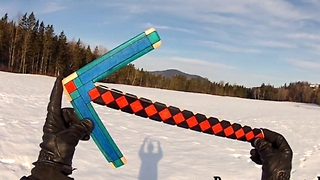 1:05
1:05
Boomerangsbyvic
5 years ago $5.04 earnedAwesome Minecraft-inspired pickaxe boomerang
8442 -
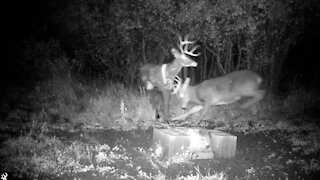 0:13
0:13
The Wildlife Channel
2 years ago $25.18 earnedWhitetail buck completely destroys decoy deer
37.5K109 -
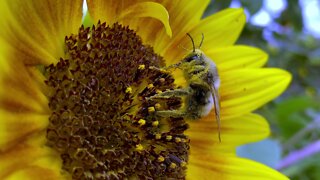 1:08
1:08
WildCreatures
1 year ago $4.75 earnedBusy bumblebee is completely covered in pollen as she works
12.5K47 -
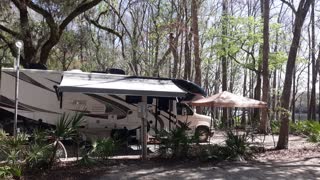 0:32
0:32
ZebJohnson
2 years agoYellow Jacket RV Campground
28 -
 0:30
0:30
YELLOW JACKET
1 year ago $0.01 earnedYJACK MANO by YELLOW JACKET
17 -
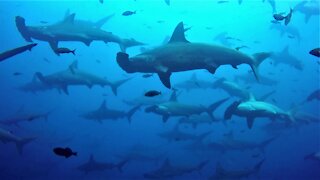 0:55
0:55
KristysWorld
2 years ago $59.36 earnedWall of hammerhead sharks completely surrounds scuba diver
4.04K12 -
 0:11
0:11
fredhannie
2 years agoYellow jacket fly
30 -
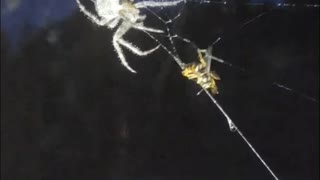 0:59
0:59
ViralHog
1 year agoSpider Catches Yellow Jacket in Its Web
1113 -
 1:34
1:34
WildCreatures
2 years ago $8.58 earnedFascinating wasps feed their larvae and build their nest
21.2K64 -
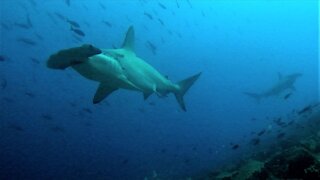 0:36
0:36
GalapagosGuys
2 years ago $23.65 earnedDivers hide in rocks as hammerheads swarm above them
15.3K47